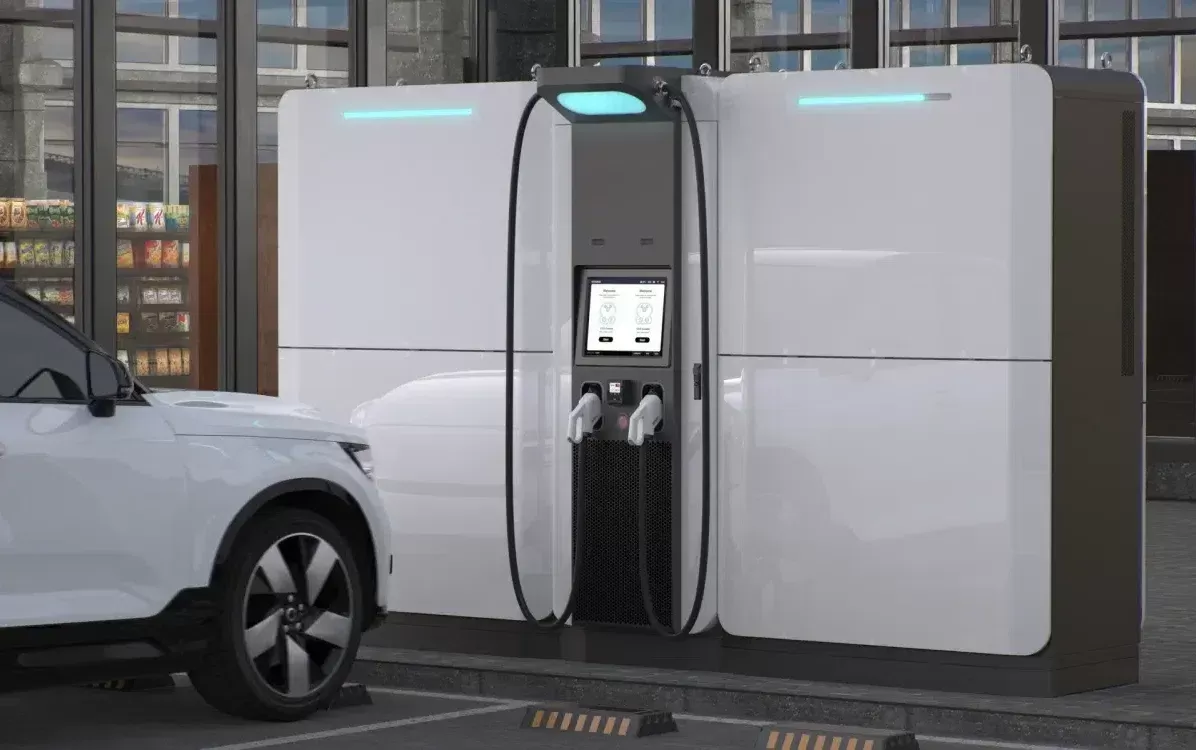Notifications

10 minutes, 23 seconds
-7 Views 0 Comments 0 Likes 0 Reviews

Introduction: Why EV Charging Matters More Than Ever
As a professional China EV charger manufacturer, Topper Company delivers dependable electric vehicle charging equipment and comprehensive charging solutions.
The real estate industry is on the verge of a major shift. According to a recent CBRE white paper, the commercial and residential real estate sectors are expected to experience significant growth by 2025. This growth presents a unique opportunity for developers, investors, and property managers, but it also brings a challenge: how do you differentiate your properties in an increasingly competitive market?
One powerful way to gain a competitive edge is by embracing electric vehicle (EV) charging infrastructure. As the world moves toward sustainable transportation, EV charging is quickly transitioning from a luxury to a necessity. Forward-thinking real estate professionals are integrating EV chargers into their properties to attract tenants, future-proof their assets, and unlock new revenue streams.
The global transition to electric vehicles (EVs) is happening faster than ever. With strong support from government policies and ambitious electrification targets from major automakers, it's clear that the shift to EVs is no longer a question of "if," but "when." In fact, estimates suggest that the U.S. will need to invest around $87 billion in EV charging infrastructure by 2035 to fully transition to electric vehicles.
While the Bipartisan Infrastructure Bill has allocated $5 billion for EV charging, this is just the tip of the iceberg. The public sector alone cannot meet this demand. The responsibility—and opportunity—largely falls on private industries, especially real estate.
From office complexes and retail centers to multifamily housing and logistics parks, EV charging infrastructure can significantly enhance a property's appeal. Beyond meeting tenant expectations, these charging stations can also drive long-term value and generate additional income through usage fees and partnerships with charging network providers.
Integrating EV charging into a property is not just about keeping up with the latest trend—it's about remaining relevant in a rapidly evolving market. Here’s why it’s a smart move for real estate owners and developers:
Properties with EV charging stations are seen as modern, sustainable, and forward-thinking. Studies show that buildings with EV amenities can command higher rents and experience lower vacancy rates, especially in areas where EV adoption is on the rise.
More and more renters and commercial tenants are eco-conscious. Offering EV charging aligns with sustainability goals and makes your property more attractive to a wide range of tenants—from environmentally minded families to corporate clients with green initiatives.
As more cities and states introduce mandates for EV charging infrastructure in new developments, getting ahead of these requirements can help you avoid costly retrofits and potential penalties down the road.
Federal, state, and local incentives are available for installing EV chargers, helping to offset the upfront costs. These include tax credits, rebates, and utility-based programs that support infrastructure upgrades.
EV charging stations offer property owners the chance to generate additional revenue. You can charge users a fee, partner with charging service providers for profit-sharing, or offer subscription-based access for tenants.
The commercial real estate sector is perfectly poised to benefit from the EV shift. Retail centers, business parks, and hospitality venues are ideal locations for Level 2 and DC fast chargers, attracting foot traffic and encouraging longer stays.
For example, EV chargers in retail spaces can increase customer dwell time, leading to higher sales. For office buildings, workplace charging meets sustainability goals and attracts top talent. Meanwhile, hotels and resorts offering on-site charging can appeal to EV-driving travelers.
One of the most exciting opportunities lies in fleet charging.
As e-commerce continues to grow and delivery fleets electrify, the demand for fleet charging hubs is skyrocketing. However, there’s still a shortage of real estate that meets the physical, electrical, and logistical needs for fleet charging.
Industrial property owners who act now can position themselves as leaders in this space. Properties located near major highways, distribution centers, or urban areas can be retrofitted or developed with EV infrastructure to cater to logistics companies transitioning their fleets.
This shift doesn’t just benefit large corporations; small- to mid-sized fleet operators and municipalities will also need reliable charging solutions, presenting a rare opportunity to create high-demand, high-value properties in an otherwise low-margin sector.
Multifamily housing developers can no longer overlook the EV revolution. Tenants are increasingly expecting more than just parking spaces—they want easy access to reliable, convenient charging at home.
Installing EV chargers in apartments, condos, and residential communities offers numerous advantages:
Competitive Differentiation: Properties with EV charging stand out in listings and attract younger, tech-savvy renters.
Tenant Retention: Offering this amenity enhances tenant satisfaction and can reduce turnover.
Flexible Billing: Property owners can implement metered usage, offering transparent, usage-based billing or flat-rate plans.
Planning ahead is key. While retrofitting can be costly, incorporating EV charging into new builds or upcoming renovations is more cost-effective and scalable. Modular and smart charging solutions make it easier to manage demand, track usage, and maintain infrastructure.
Before adding EV chargers to your property, here are a few key factors to consider:
Ensure your property’s electrical system can handle the additional load. You may need to coordinate with utility providers for upgrades.
Choose between Level 1, Level 2, and DC fast chargers based on your property type, tenant needs, and budget. Residential properties may prefer Level 2 chargers, while commercial fleets might require DC fast chargers.
Consider chargers with smart features like load balancing, remote management, and network connectivity, which optimize usage and reduce energy costs.
Work with experienced contractors to ensure compliance with local building codes, zoning laws, and fire safety regulations.
Decide whether the chargers will be for tenants only or open to the public. Consider flexible payment models like pay-as-you-go, memberships, or free charging for tenants.
The electric vehicle revolution is reshaping industries—including real estate. As EV adoption grows, so will the demand for accessible, convenient charging infrastructure. By investing in EV chargers today, property owners can position themselves for long-term growth, enhance property value, and showcase their commitment to sustainability.
While the initial investment may seem significant, the long-term benefits—from tenant attraction and retention to new revenue streams and regulatory advantages—make it a smart move. Real estate professionals who embrace EV infrastructure now will be better equipped to thrive in tomorrow’s market.
Real estate has a unique opportunity to lead the transition to electric mobility. Whether you’re managing commercial spaces, developing multifamily housing, or investing in industrial logistics hubs, EV charging infrastructure is a powerful tool for growth, innovation, and success.
As the infrastructure gap narrows, the market will reward those who act early. EV charging stations are not just a passing trend—they are a cornerstone of the sustainable, tech-driven communities of the future.Know more about Google SEO Directory
China EV Chargers EV Charger Manufacturer EV Charging Solutions

